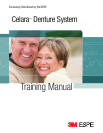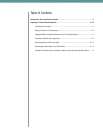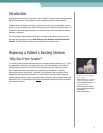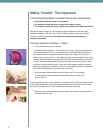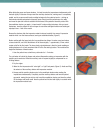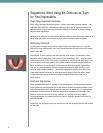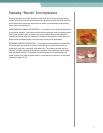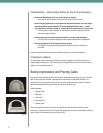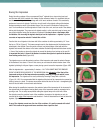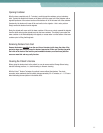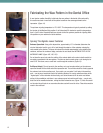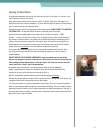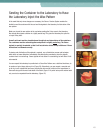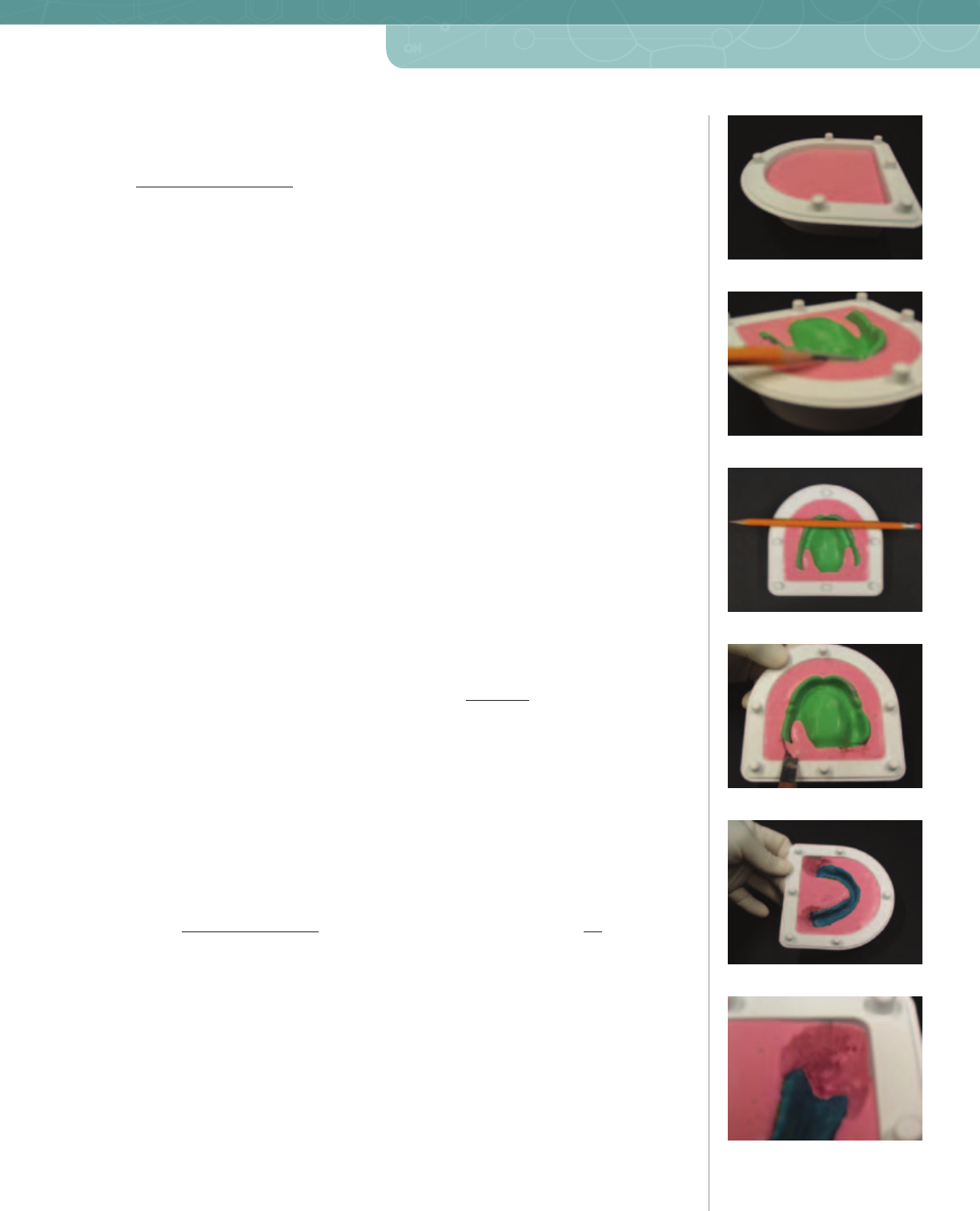
9
Boxing the Impression
Empty the entire package of the pre-measured Celara
™
alginate into a clean mixing bowl and
use the lower half of the container full of water for the measure of water. It is important that you
use the amount of alginate in the package with a full lower container of water. This consistency
produces a loose mix of alginate. Too thick a mix will result in the alginate rolling at the denture
borders exposing too much of the denture flange. This can result in the denture locking on the
cast. Too much water or too little alginate will result in too thin a mix, and can result in the denture
sinking into the alginate. The proper mix of alginate results in a thin mix which may be lumpy and
may contain bubbles having the consistency of oatmeal. It is okay to have a few lumps and a
few bubbles. We are using the alginate mainly to box the impression— alginate is just as
accurate an impression material if mixed thin or thick.
Pour the thin mix of alginate in the lower half of the container to within approximately 1/4" from
the top, or 7/8 full (Figure 9). This leaves enough room for the displacement of the denture when
submerged in the alginate. Cover the palate, occlusal, and incisal edges of the teeth with the
alginate and immerse the denture in the lower container filled with alginate teeth side down so that
1–2mm of the borders are above the alginate to prevent the denture from locking on the cast. It
is important that only 1–2mm of the borders are above the alginate to prevent the denture
from locking on the cast (Figure 10A).
The alginate may run onto the posterior surface of the impression and cause the anterior flanges
of the denture to rise above 1–2mm. If this occurs, you can tease the anterior border down in the
alginate by holding it with your fingers or even placing a pencil across the impression (Figure 10B).
After the alginate sets —approximately 2 minutes —ALL THE ALGINATE MUST BE REMOVED
FROM THE IMPRESSED SURFACES OF THE IMPRESSION. It is extremely critical that all the
impressed surfaces of the impression be exposed by removing all alginate which is over
the impression. The alginate can be easily removed by trimming it away with a dull knife
(Figure 11A, 11B). It is recommended that the alginate at the heals of the impression be removed by
cutting it away on a bevel. This places excess stone behind the heal of the cast— strengthening the
heals of the cast which is where most casts fracture.
When boxing the mandibular impression, the posterior heals of the impression will be immersed in
the alginate and all the alginate covering these areas of the impression must be removed prior to
pouring a cast. This is easily accomplished cutting the alginate away with a dull knife. When
the alginate covers the posterior heals of the mandibular impression, the alginate can only be
removed to the edge of the impression and therefore 1–2mm of these borders will not be above the
alginate. (Figure 12).
If any of the alginate ran out over the rim of the container, it is easily removed with a dull
knife. This assures the upper and lower containers have a positive seat.
Figure 9
Figure 10A
Figure 10B
Figure 11A
Figure 11B
Figure 12



